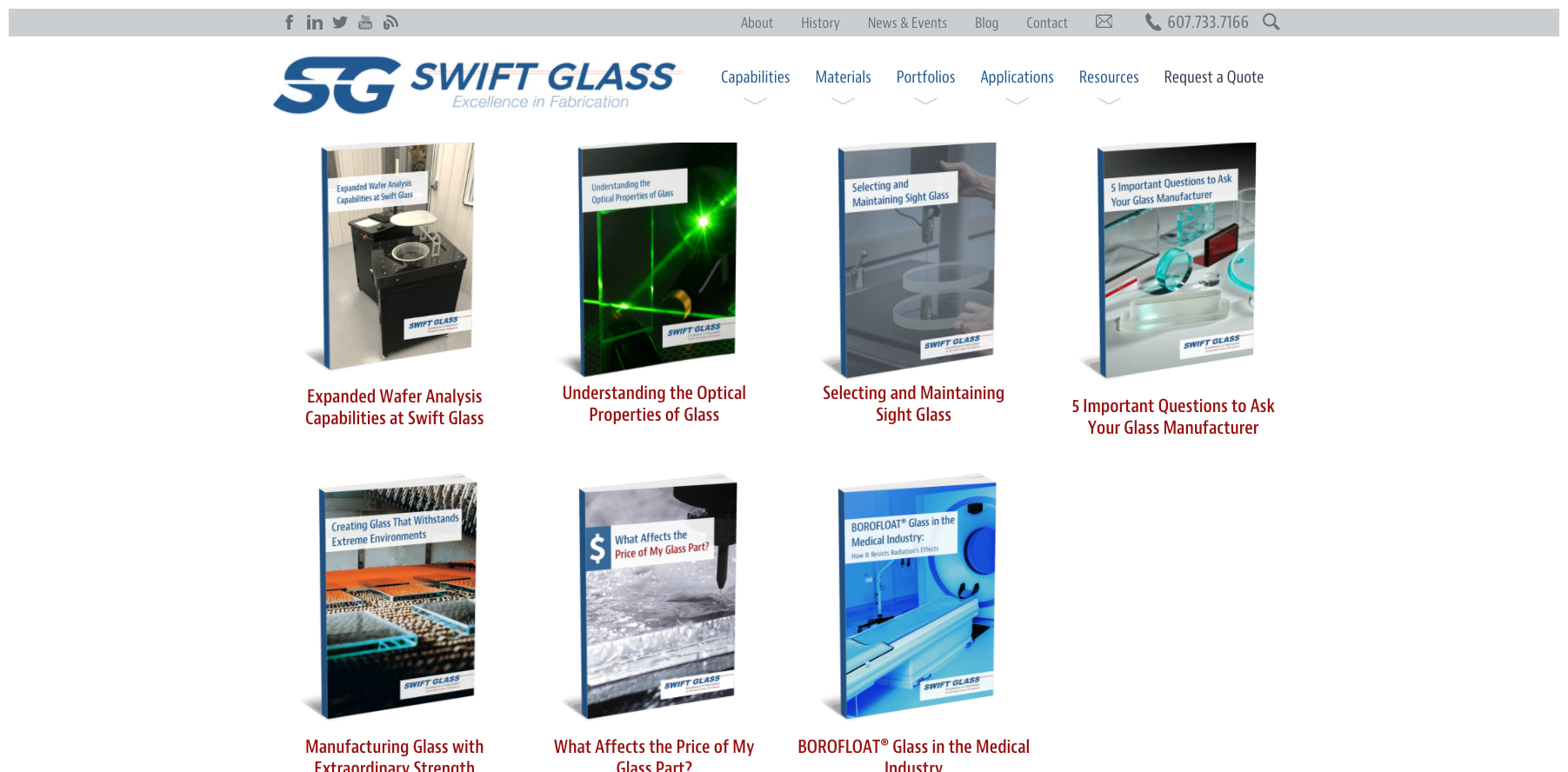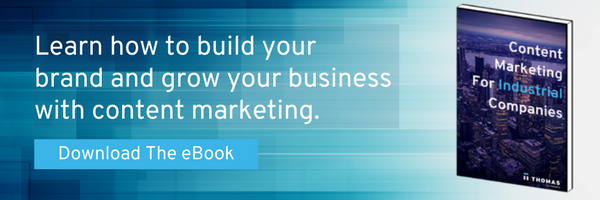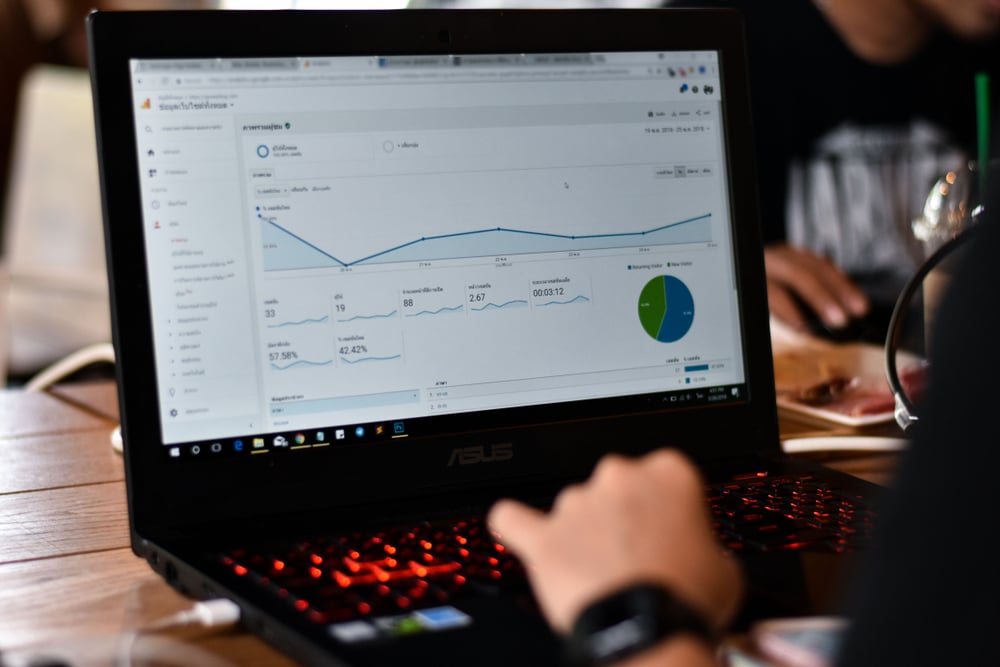9 Easy Tips For Creating A Lead-Generating eBook: For Manufacturers & Industrials
Juliette Ferraro March 4, 2021
Creating an eBook for your business is one of the best ways to convert leads and increase brand awareness among potential buyers. According to Content Marketing Institute, 51% of today’s B2B businesses incorporate eBooks into their content marketing campaigns.
Whether offering valuable industry tips, troubleshooting, product details, case studies, or comprehensive service overviews, eBooks can be used to address everything from product components to company best practices. Ebooks also enable businesses to connect with a target audience based on their specific stage in the buying journey.
However, eBooks can be time-consuming and, in some cases, somewhat expensive to produce. Hence, it’s essential to keep a few simple tips in mind to ensure an optimal return on investment (ROI).
1. Write Your eBook With Your Target Audience In Mind
Your eBook should be written for a specific audience. Put some serious thought into the specific personas you want to target — are you trying to reach designers? Procurement managers? Plant managers? MROs? Determine who you want to focus on and where you can create the most powerful connections.
Remember to put yourself in the reader’s shoes: Where are they in the buying funnel? What information is valuable to them? Are they researchers?
For example, an engineer's job focuses on:
- The form, fit and function of products
- Evaluating products to determine the best available solution
- Information about a product to make the best decision
Target them with product brochures that detail sizing charts/dimensions, performance curves, graphs, CAD files, standards, specifications, certifications, product options/configurations, etc.
All of this information can help determine your overall eBook strategy and guide your content's direction to either detail product features or take an educational approach. Whatever content you’re offering, make sure it lines up with readers’ needs.
Learn More: The Three Most Influential B2B Buyer Personas In Manufacturing
2. Make Sure Your eBook Works To Accomplish Your Marketing Goals
Once you know the audience you’re writing for, consider your goals in reaching these users. Effective content marketing assets like an eBook reinforce your company’s brand while simultaneously driving traffic, establishing your industrial business as a subject matter expert, and eventually generating sales. But what insight can you offer to these users? What problems can you help solve? What guidance might your readers need?
An eBook should offer your readers valuable information. Providing informative, useful content will help position you as a knowledgeable leader in your industry and increase overall brand awareness. What do your potential customers want? Does it align with what you plan to write about? You’ll also want to evaluate your topic and take stock of the resources already available online. Part of being an expert in your field is finding a unique angle of a subject to cover. How is your information different from what’s already available? Quality content answers "yes" to the following questions:
- Is it relevant?
- Is it valuable?
- Is it unique?
- Is it detailed?
3. Keep Your eBook Copy Clear And Consistent
Most eBooks are reasonably long at an average of 2,000 to 2,500 words. Of course, depending on the topic, 1,000 or 1,500 words may be more than enough to convey your information clearly. Regardless of the length, avoid “fluff.” Readers can tell when you’re just trying to up your word count. We also recommend first creating an outline to roadmap your eBook structure. This will help ensure no important information is left out while allowing for an easier, faster writing process. It will also ensure you don't lose sight of the goal of your content.
Downloading an eBook is an investment in time and focus for the reader, so keep your style consistent and engaging throughout your eBooks. Write simply and clearly, and aim to educate and engage. It’s helpful to think about your eBook as a conversation between you and users and a way to connect with industry professionals directly.
What's The Difference: Content Marketing - eBooks vs. Blogs
4. Use The Right Colors
Keep in mind that the colors you use in your lead-generating guides should remain consistent with your company's brand colors and guidelines. Colors in content marketing can help support and promote brand awareness and it even plays a part in behavioral psychology. According to marketing expert, Neil Patel, "more than 90% of purchase decisions are influenced by visual factors" and "color increases brand recognition by 80%."
So the colors you choose for your eBook can actually communicate an emotional connection. There's no wrong way to choose your color scheme, but consider creating a theme that showcases your brand and fits your overall company style. Add in pops of color to catch your audience's attention. Here's the emotion that these colors generally convey:
Blue: Represents security and trust.
Red: Represents power, passion and triggers stimulation.
Green: Represents the environment and health.
Yellow: Represents optimism and is an attention grabber.
Orange: Represents cheerfulness and confidence.
Neutral: Represents professionalism and simplicity.
Read More: The Role Of Color Theory In Industrial Marketing
Note how Swift Glass showcases their eBooks in their online Resource Library. Relevant images are used as the cover of the eBooks with text that matches Swift Glass' brand.

5. Add Good Imagery To Your eBook
Yes, your audience may be judging your eBook's cover. Likewise, the best copywriting in the world will fall flat without an excellent visual presentation. Design your eBook pages to direct readers’ attention to the most important information, like highlighting key points with graphics, and using appealing copy layouts and headlines with directional cues. Playing to the user’s eye is a highly effective way to enhance your content and your message's key elements.
But keep in mind that eBook design should enhance, not distract, so keep your look consistent and clean. There are dozens of free marketing apps to help make your marketing more effective and visually appealing. We enjoy using Canva to design our eBooks in Presentation style — Canva has a free version with a bunch of free templates to choose from and easily convert into a shareable PDF.
6. Add A Final CTA Within Your eBook
Always conclude your eBook with a brief about your company to increase your brand awareness and for your audience to trust what they just read is coming from an expert. Don't forget to add a final CTA link back to your Contact Us webpage and any other relevant information for readers to contact you, like your phone number and email address.
7. Create A Landing Page For Your eBook
At this step, you've created your eBook and it's time to get website visitors to download it.
Landing pages are the gateway to lead generation and user information collection, so make sure your page stands out. A landing page is a web page on your industrial website with a single focused call-to-action. There is typically no top-bar navigation links on a landing page, and if the rest of the page is designed effectively with copy and imagery that emphasizes your eBook’s value, the user will be likely to download your offer.
A few other things to keep in mind when designing your landing page include copy length, choice of videos, the length and placement of your form, and the call-to-action (CTA). There has been some speculation that short forms are more likely to be filled out than longer forms, but insufficient fields may increase the possibility of a low quality lead. In addition to the number of fields on a form, there are also different types of fields to test out, like drop-down options, click boxes, fill-in fields, and multi-step forms.
Dehumidifier Corporation of America optimized their landing page using a multi-step form and increased their industrial leads by 67%!

As we previously mentioned, the color scheme you choose for your eBook is important — but so are the colors for your landing page and CTA. To ensure the reader actually clicks your CTA button, choose a CTA color that's on the opposite end of the color spectrum. For example, if your page is mostly blue and white, choose yellow or orange for your CTA button so it stands out boldly against its surroundings. It helps bring the reader to exactly where they should click.
There are many components to creating a landing page that works for you, so we encourage you to A/B test your landing page and website. A/B testing refers to creating of two versions of a marketing asset to see which copy delivers the best results. Don't worry — we can help you take the guesswork out of it all and partner with you to improve your landing page experience for your leads.
A key thing about Thomas is the ability to generate a lot of leads across various industries. We wanted to help educate our customers. Through eBooks, blogs, a revamped website — they actually drive our own knowledge out and customers appreciate the insight.
8. Promote Your eBook
The last item on your eBook launch checklist should be ways to promote your content. Here are a few ways you can promote your newly created guide:
- Email nurturing campaign
- Social media posts
- Paid marketing ads including PPC and display ads
- Within your blog content as an in-line text CTA
- Popup banner or side-rail banner on your website
- In an industry-focused newsletter
Nudge, nudge! Did you know that you could promote your eBook and website content in the Thomas Industry Update newsletter? This daily email reaches the inboxes of 300,000+ active, in-market buyers and is a great way to reach your target audience for lead generation. Promote your eBook in TIU.
9. Hire Marketing Expertise If Necessary
Crafting a thoughtful eBook may seem like a daunting task at first, but with some planning and research, you can be well on your way to creating valuable, lead-generating content. If you need help with the creative process, our lead generation experts can create and design the eBook for you and ensure your content is put in front of the right B2B buyers.
"With Thomas running our lead generation efforts and marketing, our sales increased by 60% in just one year," said CJ Winter. "Thomas maximized our company exposure, drove a record number of qualified leads, and helped us turn these opportunities directly into sales dollars."
Interested in learning more? Contact our team today to discuss how to improve your company’s content marketing strategy.
In the meantime, here are our other online solutions that have been helping manufacturers grow:
- Give a tour of your factory floor with our free video content production services with the purchase of an advertising program and connect with more customers creatively online when travel is restricted.
- To see where you can improve online and how your manufacturing brand compares to competitors, request a free Digital Health Check.
- Increase your RFQs with a free Thomasnet.com profile and connect with new customers on the platform where more than a million buyers from various industries and geographies source are sourcing for products and services.
- See the exact companies that are searching for your textiles manufacturing services with a free In-Market Buyer Report.
- To increase your brand awareness to readers specifically by job function who are already interested in industry news, check out our newsletter advertising options.
Did you find this useful?











